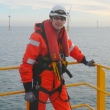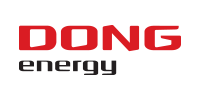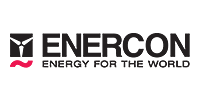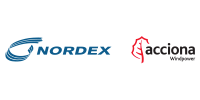11:30 - 13:00 Turbines operating in low temperatures
Turbine technology


Room: Hall G2
Cold climate sites are characterised by the occurence of icing events and/or periods with temperatures below the operational limits of standard wind turbines. This session will address specific challenges faced during the operation of wind farms in cold climates. Topics include low-temperature compliance testing of wind turbines, methods for detection and analysis of icing events, as well as the operational performance of de- and anti-icing systems.
You attended this session?
Learning objectives
- Learn about the importance of the increasing market share of cold climate wind turbines and the effect of such environment on wind turbine components;
- Gain insights in the behaviour of certain critical components in (extreme) low temperatures, its cold start-up performance and potential failure modes which have to be taken into account during design;
- Get an overview about icing basics and ice detection systems for wind turbines;
- Learn about tools used for modelling the thermal behaviour of a blade and respective de- and anti-icing system;
- Understand the uncertainties related to them, the methodology for their validation and the application.
Additional speakers to be confirmed.
Co-chair(s):

Presenter

Co-authors:
Pieter Jan Jordaens (1) F Christof Devriendt (2) Stefan Milis (1) Bastiaan Reymer (1)
(1) Sirris / OWI-Lab, Heverlee, Belgium (2) VUB, Brussels , Belgium
Presenter's biography
Biographies are supplied directly by presenters at WindEurope Summit 2016 and are published here uneditedPieter Jan joined Sirris in 2010 as a project manager. His first task was to set-up the OWI-Lab from scratch. After that, he focused on developing the R&D and test services of the lab which is focusing on topics related to climate chamber testing for cold, hot, and tropical climates. In cooperation with the VUB he also works on topics as structural health monitoring (SHM) and big data for wind turbine applications. Before joining Sirris, Pieter Jan obtained a Master's degree in Electro-Mechanical Engineering from the International University College Group T in Leuven, where he also followed the International Postgraduate Programme in Entrepreneurial Engineering. Pieter Jan is also member of the IEA Task 19 research group on cold climate wind turbines.
Abstract
Low temperature compliance testing of wind turbine applications for the cold climate wind power market
Introduction
As the deployment of wind energy in cold climate regions is growing, OEM’s and component suppliers are looking into optimisation projects and new designs features in order to make sure their machinery is capable of surviving and reliably working in such harsh environments. Due to good wind conditions at such locations, an increased air density, low population densities, and new technological solutions for operating in low temperatures and icing environments, the cold climate wind power market is gaining momentum. IEA wind task 19 dealing with wind power in cold climates, indicated in their recent market study that nearly 60GW of the existing fleet of wind turbines worldwide is located in cold climates locations. Also, 50GW will be added between 2013 and 2017. As this market is increasing, so does the awareness of the challenges associated with this environment.
Approach
Developers, OEM’s and component suppliers have become aware that the standard temperature specification is not sufficient for operations the cold climate market, certainly not those where temperatures can go down to -40°C. New features as gearbox heating, the use of different materials and lubrication systems, anti- and de-icing technology etc… have been introduced for this niche market.
During the design process of such cold climate technology, testing and validation of these new features early in the design is essential. OWI-Lab therefore has set-up a large climatic test chamber in order to functionally test and validate electrical, hydraulic and mechanical systems in a controlled environment.
Main body of abstract
So called climate chamber tests, are standard validation tests in other industries like automotive, off-highway and aerospace applications that also need work in low and icing environments. The challenge for wind turbine applications with respect to test facilities for cold climates are the large dimensions and weight of components, the needed cooling power and the needed power requirements to set-up functional tests that simulate the environment in the best possible way.
OWI-Lab has developed different test approaches and test bench set-ups for electro-mechanical machinery that can be found in the wind turbine. Components as gearboxes, transformers, power converters, lubrication systems, de-icing technology have been tested in the climatic test facility during extreme low temperatures. Based on the experience in the field, and in the lab one can summarize that certain machinery need special attention. Start-up events for example after grid fall or idling in cold conditions might be critical to certain components. The rotating elements in a gearbox, pitch or yaw system or generator for example can be at risk because of insufficient lubrication and/or differential thermal expansion of its components. Viscous and stiff lubricants can affecting oil flows put exceptional load on pumps for example, leading to certain failures. The test methodology and lessons learned regarding operations and testing at cold temperature will be described in this work to underline the importance of cold climate testing in the validation process.
Conclusion
A significant part of the existing and planned fleet of wind turbines are or will be operating in remote locations and harsh climatic conditions. Low temperature conditions can affect the turbines availability and profitability. Different electromechanical machinery located in the wind turbine design can be affected by low temperatures and even lead to premature failures. A dedicated test facility with regard to low temperature testing was been set-up by OWI-Lab in order to support companies in the validation process of cold climate designs.
Learning objectives
The paper will recognize the importance of the increasing market share of cold climate wind turbines and the effect of such environment on wind turbine components. The study will gain insights in the behavior certain critical components in (extreme) low temperatures, its cold start-up performance and potential failure modes which have to be taken into account during design.





Follow EWEA on: